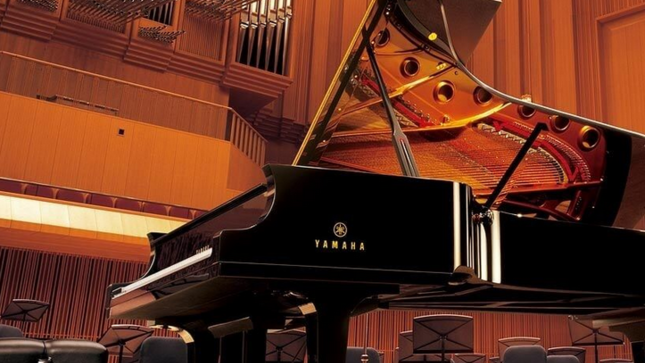When it comes to pianos for sale, there are many options. It’s not an easy choice because so many brands exist. Those interested in high-end models want to know which two firms provide top-of-the-line pianos: Steinway or Yamaha. But which one is superior?
The price, sound quality, action and touch, and design of Yamaha and Steinway pianos are different. Many high-quality components are manufactured in-house by Yamaha, which utilizes Japanese craftsmanship and parts from East Asia.
What Is the Difference Between a Steinway and a Yamaha Piano?
Cost Comparison Between Steinway and Yamaha
The piano is one of the most popular instruments.
Take a look at any pricing chart and you’ll see that the low-end models of both the new Steinway and Yamaha have the greatest price gap. A 5′ 1″ Steinway grand, for example, costs approximately $69,000. When you compare it to a comparable Yamaha, the difference is enormous. A big concert grand from Steinway costs between $21,900 and $34,000. In terms of price, there isn’t much leeway for larger concert grand models that are 7’0″ – 9’6″. The Yamaha CFX costs around $179,000
When it comes to saving money on a Steinway or Yamaha, the secondhand market is your best bet. Since Steinways’ pianos are built to last from one generation to the next, they have a significant advantage in this area.
An older Steinway piano, for example, can be completely rebuilt with many of the same components as today’s pianos and yet run less than a new one. Used Steinways are still more expensive than other piano brands; although Fazioli pianos have a high-end price tag.
The cost of a piano is determined by many factors, including marketing, manufacturing costs, labor, and the disappearing piano market. While Yamaha’s prices have gone up over time, it is still a high-quality instrument at an affordable price. In contrast, Steinway has seen significant price increases in recent years alone.
The Build Quality of Yamaha and Steinway Pianos
The materials used on mid- and high-end pianos vary significantly, with no clear distinction between the two. North American trees are employed in the construction of Steinway instruments. The wood frame is thicker than standard pianos, and it is often finished in a black mahogany finish that withstands frequent contact.
piano strings
The keyboard is constructed of Bavarian spruce and topped with polymer (previously ivory). The D model has brass pedals, steel strings, and copper wound bass strings. The inside and outside rims are constructed of multiple layers of maple wood. Unlike some pianos, the soundboard is tapered, which contributes to the distinct tone of each instrument. For further information on the model D, see below.
The Yamaha pianos’ spruces, oak, mahogany, and other East Asian woods are acquired. The soundboard is constructed of quarter-sound spruce; as a result, it has a smoother straight line. On their grand and upright models, full-length ribs run the length of the soundboard.
The Yamaha’s interior contains maple wood bridges, copper bass strings, and high-quality hammers. The action rails are made of aluminum alloy metal, so they won’t be as sensitive to humidity changes.
All Yamaha pianos, with the exception of the GA1 and GB1 models, employ their Duplex Scaling mechanism. Even when not playing, part of the string resonates for a fuller tone thanks to Duplex Scaling. The keys, like those on a Steinway grand piano, are composed of spruce wood. Instead of outsourcing, Yamaha pianos have high-quality thick frames that are constructed by them rather than others. Their frames also include a unique finish to help them deliver the distinctive sound quality that Yamaha is known for.
Quality of Sound
The most significant issue I encounter as a pianist is sound quality. Each piano has its own personality, which makes it unique. You’ve undoubtedly heard a Yamaha piano before and experienced the rich, clear tone.
I use them for delicate pianissimo dynamics and crystal clear tones in repetitive sections of music. A Yamaha performs adequately for a lot of material. Its bright tone is ideal for Jazz, Pop, Broadway Musicals, and Rock.
piano on stage
In my experience, Steinways seem to have a well-rounded tone. This is regardless of the model being played, but the B, D, and O models are excellent examples of these qualities. I’d go as far to call it a metallic sound with a little more percussive snap to it.
Steinway pianos have a way of communicating exactly what the artist wants. I’m able to produce color changes and articulations more easily on a Steinway piano. I also discover new dynamic levels that I wouldn’t have known before. For lyrical phrases and musical personality, it’s an excellent choice.
The difference in tone quality between two pianos of the same model is common among Steinway owners. This is true in some way, and it’s a valid point for you to go through many Steinways to discover the one that best fits your personality. Because they’re made from hand gluing wood, bending it around the frame, and so on.
I believe this is when Yamaha excels. I would describe the sound of a Yamaha as being “consistent.” It does not vary significantly from model to model, so what you see is what you get. One C7 model will sound practically identical to the next, and it won’t be readily apparent which is which. For some artists, this is fantastic; for others, it’s a deficiency in my opinion.
For major concerts, I like to use Steinway D’s since they are quite consistent in their sound. The 9′ Yamaha grand pianos, on the other hand, are fantastic for big stages. It is considerably easier to mimic a Yamaha piano sound than it is to duplicate a Steinway piano sound.
When comparing Steinway and Yamaha pianos, the model piano makes a huge difference. Overall, I believe you’ll notice that Yamaha pianos are considerably brighter. At the same time, you’ll discover that a Steinway is a greater creative instrument to play.
Touch and Action
For me, the action is more important than the sound. Classical music that is more difficult requires an instrument that can perform many tasks. With their quick action, I’ve played a lot of fantastic Yamaha pianos with exceptional precision and accuracy. With the G major 7th, the notes flow by effortlessly. It’s also simple to enter and exit passages, whether it’s going up an octave or leaving chords.
Every piano you see is unique, therefore it comes down to personal preference on this matter. I’ve played pianos with feather-like action and a responsive touch that were just as good. The ability to create a particular dynamic is where you can tell the difference between Steinway and Yamaha pianos.
There’s not much you can do to change the bright sound of a Yamaha piano. It will have the same breadth, whether it’s pianissimo or forte. Although Steinway pianos are wonderful, there isn’t much you can do about that brilliant sound.
If you want a strong forté, it’s possible. By changing your touch, you can also produce a very well-rounded and full forte! This has been true for every Steinway model I’ve tried, and where I’d give them the advantage in terms of action and contact is because of this.
Which Model Is For You?
There are so many things to consider when choosing between a Steinway and a Yamaha piano. Both of these piano companies offer excellent pianos that are well-made. The sound quality, instrument longevity, how much you want to spend on the piano, and many other factors will have a big influence on your decision.
If I had to choose one for you, it would be a Steinway piano. Tone is important to me as an artist, and as far as pianos are concerned, I believe that Steinway shines. The sound of a Steinway piano is distinctive, and it varies from piano to piano, even if they are the same model. Before you choose a piano, try out as many as you can so that you can make an informed decision.
In this area, however, Yamaha is without a doubt not the weakest. When it comes to consistency, there isn’t another company on the market that can compete with them. You always know what you’re going to get with a Yamaha piano; in fact, it’s an even better instrument for fans of Jazz and Pop music.
For the smaller Yamaha instruments, I recommend the C1, C2, or C6 models. They have great touch and are in tune, as well as being exceptionally well-made. If you want a bigger instrument, the standard is the C7, which is comparable to a Steinway B but with a much fiercer tone.
If you’re buying a Steinway piano, get a new model instead of a used one. Used Steinways are fantastic, but new pianos always play and sound better. The model O is one of my favorites, as well as the model S if you have limited space. Choose the model B for bigger models with confidence.




